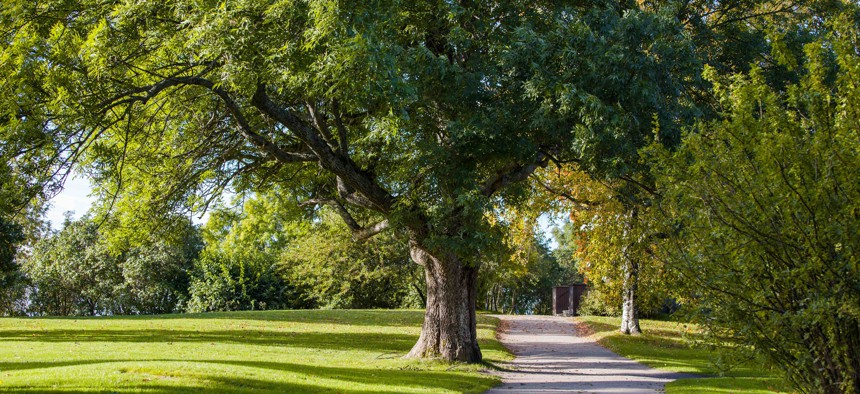Invasive Insects Will Kill 1.4M Trees Across the US

GettyImages/ Hou
Replacing trees attacked by the East Asian beetle, which has invaded 35 states, could cost $900 million, one report shows.
Invasive insects will kill almost 1.4 million urban trees in the U.S. over the next 30 years, costing roughly $900 million to replace them, according to an academic study published in the Journal of Applied Ecology.
Urban street trees are important because more than 80% of the U.S. population live in urban settings, but the trees are at high risk of being killed by the East Asian wood-boring beetle, also known as the emerald ash borer, the researchers say.
The East Asian beetle was first detected in the U.S. in Michigan 20 years ago and the U.S. Department of Agriculture says it has been responsible for killing tens of millions of ash trees in 30 states. So far, infestations have been detected in about 35 states. There are ways to control the bug, but there is no cure for the problem, according to the Agriculture Department.
The invasive insect is expected to account for 90% of all tree mortality, and eventually is expected to kill almost all ash trees. Some of the hot spots predicted to have the most urban tree mortality include Milwaukee, Chicago and New York City, the report says.
A new study estimates that over the next 30 yrs, 1.4M US street trees will be killed by invasive insects, costing over $900M to replace. ☠️ @emmajhudgins @JAppliedEcologyhttps://t.co/NEtfV7rlIr
— British Ecological Society (@BritishEcolSoc) March 14, 2022
In the study, scientists incorporated a series of four models, including street tree populations in 30,000 communities, the expected spread of 57 invasive insect species, the insects’ effect on different tree species and the cost of removing and replacing dead trees.
“These results can hopefully provide a cautionary tale against planting a single species of tree throughout entire cities, as has been done with ash trees in North America," Emma Hudgins, a postdoctoral fellow at Carleton University in Canada and lead author of the research, said in a statement. "Increasing urban tree diversity provides resilience against pest infestations.” The research was conducted while Hudgins was at McGill University in Canada.
Strategies for Combating the Treat
To help combat the threat, the Department of Agriculture created a checklist of tips. The list includes:
- Leaving firewood in place because emerald ash borer larvae can survive hidden in bark.
- Inspecting trees for signs or symptoms of an infestation.
- Talking to friends, neighbors and coworkers about what they should be aware of for their trees.
- Asking questions about your new ash tree or firewood, such as knowing the point of origin and supplier.
- Understanding the regulations that govern your state and those you may visit.
For more information from the study click here.
Andre Claudio is an assistant editor at Route Fifty.
NEXT STORY: Rideshare Riders Could Get Stuck with Medical Bills in a Crash





